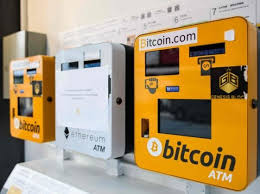Australia’s Home Affairs Minister, Tony Burke, has announced that the the government is preparing to introduce legislation granting AUSTRAC (the Australian Transaction Reports and Analysis Centre) new authority to restrict or ban crypto ATMs if deemed necessary. Importantly, Minister Burke asserts that the government is not seeking a blanket ban on crypto ATMs — rather, it wants to equip the financial regulator with tools to act in high-risk cases. (Decrypt)
This move has sparked fresh debate in Australia (and beyond) about how to balance financial innovation, consumer protection, and crime prevention. Below, we dig into the details: what’s proposed, what’s at stake, and what it could mean for the crypto ecosystem.
Why the Push for Stronger Regulation?
Rapid growth and red flags
One of the core drivers of the proposed legislation is the explosive growth in crypto ATMs. Back in 2017–18, Australia had very few crypto ATMs; now, the number reportedly exceeds 2,000. (News.com.au) That kind of proliferation means regulators are increasingly concerned about misuse.
According to data cited by Burke, AUSTRAC found that among “top users” of crypto ATMs, around 85 % of the money flowing through them was connected to scams, money-mule schemes, or other illicit activity. (Decrypt) That statistic alone has become a central justification for giving more teeth to oversight.
Money laundering, opacity, and limited tracing
Cash-based crypto ATMs present a special challenge: they allow conversion of physical money into cryptocurrencies in a relatively anonymous way, making it harder for authorities to trace suspicious funds. Burke himself said:
“It’s grown and grown rapidly … I’m not pretending for a minute that everybody who goes in and uses a crypto ATM is a problem, but proportionately what’s happening is a significant problem in an area which is much harder for us to trace.” (Decrypt)
Because of that opacity, law enforcement and regulators are concerned that crypto ATMs are being exploited by organized criminals, fraudsters, or in the financing of illicit activity (e.g. child exploitation) via untraceable money flows. (News.com.au)
Past regulatory steps — and gaps
This isn’t the first time AUSTRAC has stepped in. In 2024, AUSTRAC launched a crypto task force to clamp down on noncompliance by crypto ATM operators, and it imposed transaction caps and stricter customer due diligence rules in some cases. (Reuters) But many believe those measures don’t go far enough — hence, the push to codify broader powers into law. (Decrypt)
What the Proposed Legislation Would Do
Giving AUSTRAC “high-risk product” powers
Under the draft bill, AUSTRAC would be explicitly empowered to designate certain “high-risk products, services or delivery channels” and to restrict or prohibit them. Crypto ATMs are slated to fall under that category. (Decrypt) In effect, AUSTRAC could act (e.g. enforce bans) without needing additional parliamentary approval each time, so long as it stays within its legislated remit.
Not an automatic ban, but a tool
Significantly, the government has stated it does not intend a blanket prohibition on crypto ATMs. Instead, the proposal is to furnish AUSTRAC with discretion — to ban particular machines or models if and when warranted. Burke noted that prescribing an automatic ban might expose the government to legal challenges. (Decrypt)
That said, the power to ban would be on the table — meaning in practice, machines judged too risky could be shut down.
Transitional rules, oversight and appeals
While all the details are not yet public, legal commentary suggests the following frameworks are probable:
- Notification: AUSTRAC would likely publish criteria for what qualifies as “high-risk.”
- Due process / appeals: Operators given notice and time to respond before bans take effect.
- Sunset / review: Bans may be temporary or revisited after a set period.
- Enforcement mechanisms: Penalties, orders to remove or disable machines, and license revocation.
These structures would help ensure the powers are not misused and maintain checks and balances. (Lawyerly)
Potential Impacts & Reactions
For legitimate operators
Crypto ATM companies and advocates are likely to push back. They argue these machines provide easier access to crypto for users who might not use traditional exchanges. They also point out that Know-Your-Customer (KYC) and identity checks already apply in many installations. (TradingView) Some operators argue that strict enforcement and smart monitoring systems (pattern detection, anomaly alerts) would suffice without total bans. (Decrypt)
Operators may also demand clear, transparent rules and fair appeal processes so that regulatory uncertainty is reduced.
For consumers & small users
Many crypto users might not notice much change — especially if they use verified machines and transact in modest amounts. But in some regions, fewer ATMs might mean reduced convenience or accessibility, especially in underserved or rural areas.
Some worry that overzealous bans could stifle innovation or push activity underground, making oversight even harder. The balance will be delicate.
For crime prevention and regulator effectiveness
If used judiciously, the new powers could give AUSTRAC and law enforcement sharper tools to shut down “bad” machines without having to challenge each one in court. That could help reduce money laundering, fraud, and other bad actors exploiting loopholes.
However, misuse or overreach by regulators could draw criticism — especially if bans seem arbitrary or disproportionate.
Legal challenges & constitutional risks
Because these powers will involve restricting property, business operations, and possibly free commerce, legal challenges are likely. That’s likely one reason the government is framing the power as discretionary, not mandatory. (Decrypt)
Operators could assert that bans violate administrative fairness or due process, demanding judicial review. So the precise drafting will matter.
Navigating the Balance: Innovation vs Safety
Avoiding the “innovation kill switch”
One of the risks is that regulators overcorrect and squash the positives of crypto adoption. Crypto ATMs can:
- help inclusion for unbanked or underbanked users,
- support “on-ramp/off-ramp” infrastructure for ordinary people,
- enable competition and decentralized access, and
- spur broader ecosystem growth.
So effective regulation should aim for targeted intervention, not blanket suppression.
Data-driven criteria and transparency
For the law to be fair, the criteria for what counts as “high-risk” must be transparent, based on data, and publicly published. Regulators should avoid vague catch-all categories. Operators need to know in advance what thresholds (transaction volumes, user patterns, complaint history) might trigger intervention.
Phased implementation & stakeholder consultation
A gradual rollout, with stakeholder input (operators, users, legal experts), may reduce backlash. Pilot bans, trial periods, and structured review can help regulators adjust before scaling up.
Complementary tools: audits, monitoring, KYC
Rather than default to bans, regulators could first require stronger auditing, real-time monitoring, pattern detection, and cooperation with financial intelligence units. Bans should be a tool of last resort.
What Happens Next: Timeline & What to Watch
- Legislation introduction: The bill is expected to be introduced in Parliament in the near future. (Decrypt)
- Public and industry submissions: As with many financial bills, there will likely be a period for public and industry consultation, where operators, legal groups, and civil society can comment.
- Regulatory rule-making: After passage, AUSTRAC will need to issue detailed guidelines and criteria.
- Pilot enforcement / early cases: Watch for the first machines or providers to be designated “high-risk” and targeted.
- Court challenges: Some operators may immediately seek judicial review if they feel unfairly targeted.
- Industry adaptation: Operators may upgrade compliance systems, reduce risk exposure, or exit markets in marginal regions.
FAQs & Key Takeaways
Will all crypto ATMs be banned?
No — the government is not seeking a total ban. Rather, it wants to give AUSTRAC power to ban or restrict specific machines deemed too risky. (ABC)
What defines a “high-risk product”?
That’s to be set by regulation. Crypto ATMs are proposed candidates, based on transaction patterns, risk of illicit use, failure to comply, or other criteria. (Decrypt)
What about due process?
Legal frameworks are expected to include notification, appeal rights, review periods, and transparency so operators aren’t blindsided. (Lawyerly)
How will this affect users?
If a machine is banned, it will no longer operate. Users may need to locate alternate ATMs or shift to exchanges. But most ordinary, compliant operations may not be affected.
Could this reduce crime?
Potentially. If well-targeted, the power could help regulators shut down ATMs used for money laundering, fraud, or other illicit operations — closing loopholes that current rules struggle to address.
Final Thoughts
Australia’s move to grant AUSTRAC new powers over crypto ATMs marks a significant test for how governments handle the intersection of innovation and regulation. On one hand, there’s a real imperative: cash-to-crypto machines are already being used in suspicious ways, and regulators need effective tools to counter misuse. On the other, heavy-handed bans may dampen growth, stifle access, or push activity out of view.
The success of this policy shift will hinge on balanced drafting, clear criteria, procedural safeguards, and ongoing dialogue between government, operators, and the crypto community. If done right, Australia could set a precedent for smart, proportionate regulation — not heavy-handed prohibition — in the digital assets space.
Let me know if you’d like a shorter summary version, or a version focused more on legal or industry reactions.
Sources:
- Australia’s Home Affairs Minister unveils powers to curb crypto ATMs (Decrypt)
- New powers to crack down on crypto ATMs in Australia (ABC)
- AUSTRAC could ban crypto ATMs under draft legislation (TradingView)
- Rise in crypto ATM misuse and crackdown reporting (News.com.au)
- Australia’s proposed change to financial regulator powers (canberratimes.com.au)



























